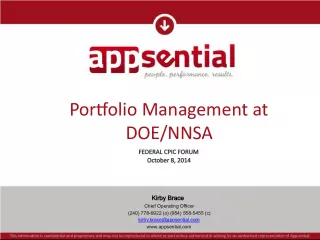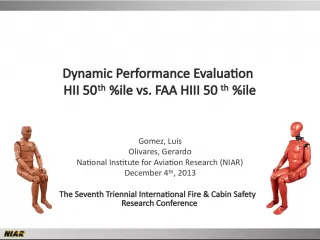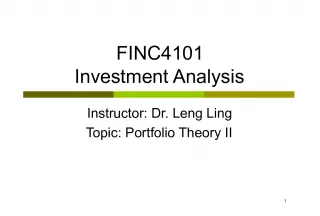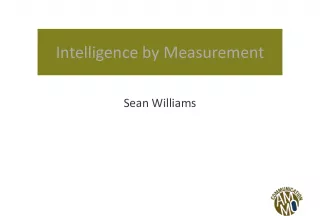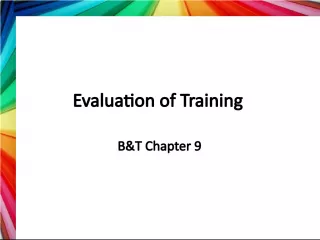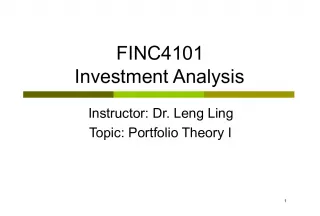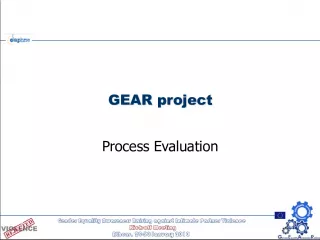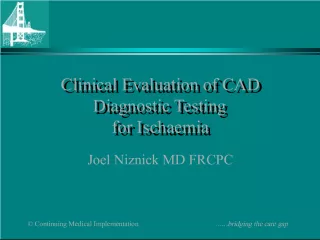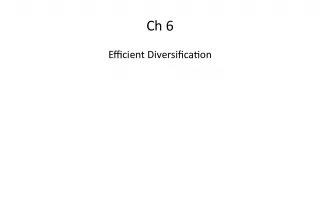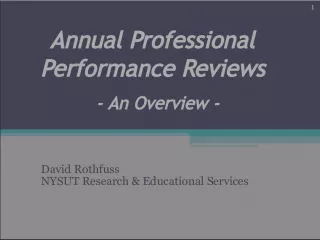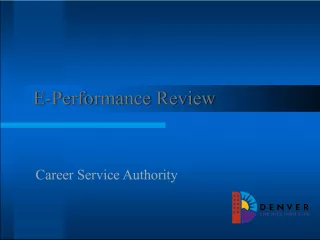Performance Evaluation and Active Portfolio Management
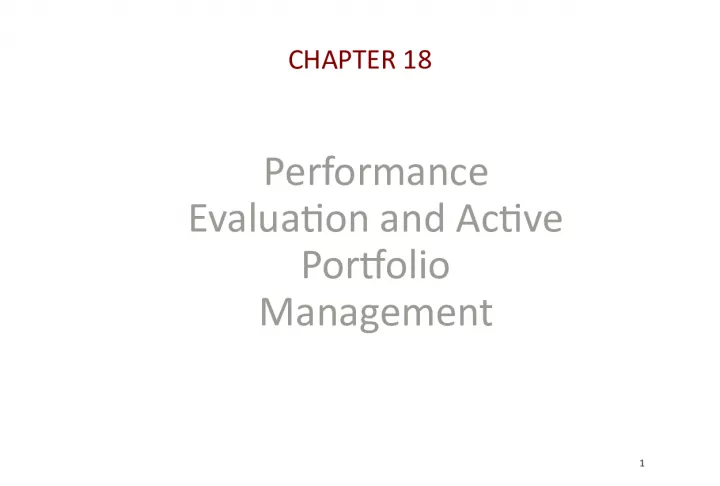

This chapter explores the complicated subject of performance evaluation and active portfolio management. Theoretically correct measures are difficult to construct, and different statistics or measures are appropriate for different types of investment decisions or portfolios
- Uploaded on | 0 Views
-
 amarosilva
amarosilva
About Performance Evaluation and Active Portfolio Management
PowerPoint presentation about 'Performance Evaluation and Active Portfolio Management'. This presentation describes the topic on This chapter explores the complicated subject of performance evaluation and active portfolio management. Theoretically correct measures are difficult to construct, and different statistics or measures are appropriate for different types of investment decisions or portfolios. The key topics included in this slideshow are . Download this presentation absolutely free.
Presentation Transcript
Slide11Performance Evaluation and Active Portfolio Management CHAPTER 18
Slide22Introduction • Complicated subject • Theoretically correct measures are difficult to construct • Different statistics or measures are appropriate for different types of investment decisions or portfolios • Many industry and academic measures are different • The nature of active managements leads to measurement problems
Slide33Abnormal Performance What is abnormal? Abnormal performance is measured: • Comparison groups • Market adjusted • Market model / index model adjusted • Reward to risk measures such as the Sharpe Measure: E (r p -r f ) / p
Slide44Factors That Lead to Abnormal Performance • Market timing • Superior selection – Sectors or industries – Individual companies
Slide55Comparison Groups • Simplest method • Most popular • Compare returns to other funds with similar investment objectives
Slide66Risk Adjusted Performance: Sharpe 1) Sharpe Index r p - r f r p - r f r p = Average return on the portfolio r p = Average return on the portfolio r f = Average risk free rate r f = Average risk free rate p p = Standard deviation of portfolio = Standard deviation of portfolio return return p p
Slide77Risk Adjusted Performance: Treynor 2) Treynor Measure r p - r f r p - r f ß p ß p r p = Average return on the portfolio r p = Average return on the portfolio r f = Average risk free rate r f = Average risk free rate ß p = Weighted average for portfolio ß p = Weighted average for portfolio
Slide88 = r p - [ r f + ß p ( r m - r f ) ] = r p - [ r f + ß p ( r m - r f ) ] 3) Jensen’s Measure 3) Jensen’s Measure p p p r p = Average return on the portfolio r p = Average return on the portfolio ß p = Weighted average Beta ß p = Weighted average Beta r f = Average risk free rate r f = Average risk free rate r m = Avg. return on market index port. r m = Avg. return on market index port. Risk Adjusted Performance: Jensen = Alpha for the portfolio = Alpha for the portfolio
Slide99M 2 Measure • Developed by Modigliani and Modigliani • Equates the volatility of the managed portfolio with the market by creating a hypothetical portfolio made up of T-bills and the managed portfolio • If the risk is lower than the market, leverage is used and the hypothetical portfolio is compared to the market
Slide1010M 2 Measure: Example Managed Portfolio Market T-bill Return 35% 28% 6% Stan. Dev 42% 30% 0% Hypothetical Portfolio: Same Risk as Market 30/42 = .714 in P (1-.714) or .286 in T-bills (.714) (.35) + (.286) (.06) = 26.7% Since this return is less than the market, the managed portfolio underperformed
Slide1111Figure 17-2 The M 2 of Portfolio P
Slide1212T 2 (Treynor Square) Measure • Used to convert the Treynor Measure into percentage return basis • Makes it easier to interpret and compare • Equates the beta of the managed portfolio with the market’s beta of 1 by creating a hypothetical portfolio made up of T-bills and the managed portfolio • If the beta is lower than one, leverage is used and the hypothetical portfolio is compared to the market
Slide1313T 2 Example Port. P. Market Risk Prem. (r-r f ) 13% 10% Beta 0.80 1.0 Alpha 5% 0% Treynor Measure 16.25 10 Weight to match Market w = M / P = 1.0 / 0.8 Adjusted Return R P * = w (R P ) = 16.25% T 2 P = R P * - R M = 16.25% - 10% = 6.25%
Slide1414Figure 17-3 Treynor Square Measure
Slide1515Which Measure is Appropriate? It depends on investment assumptions 1) If the portfolio represents the entire investment for an individual, Sharpe Index compared to the Sharpe Index for the market. 2) If many alternatives are possible, use the Jensen or the Treynor measure The Treynor measure is more complete because it adjusts for risk
Slide1616Exercise2 • 1. A managed portfolio has a standard deviation equal to 22% and a beta of 0.9 when the market portfolio's standard deviation is 26%. The adjusted portfolio P* needed to calculate the M2 measure will have _____ invested in the managed portfolio and the rest in T-bills. a. 84.6% b. 118% c. 18% d. 15.4%
Slide1717Exercise 2 • Use the following to answer questions 2-4: The average returns, standard deviations and betas for three funds are given in previous slide along with data for the S&P 500 index. The risk free return during the sample period is 6%. • 2. You wish to evaluate the three mutual funds using the Sharpe measure for performance evaluation. The fund with the highest Sharpe measure of performance is __________. a. Fund A b. Fund B c. Fund C d. Indeterminable • • 3. You wish to evaluate the three mutual funds using the Treynor measure for performance evaluation. The fund with the highest Treynor measure of performance is __________. a. Fund A b. Fund B c. Fund C d. Indeterminable • • 4. You wish to evaluate the three mutual funds using the Jensen measure for performance evaluation. The fund with the highest Jensen measure of performance is __________. a. Fund A b. Fund B c. Fund C d. S&P500
Slide1818Limitations • Assumptions underlying measures limit their usefulness • When the portfolio is being actively managed, basic stability requirements are not met • Practitioners often use benchmark portfolio comparisons to measure performance
Slide1919Performance Attribution • Decomposing overall performance into components • Components are related to specific elements of performance • Example components – Broad Allocation – Industry – Security Choice – Up and Down Markets
Slide2020Market Timing • Adjust the portfolio for movements in the market • Shift between stocks and money market instruments or bonds • Results: higher returns, lower risk (downside is eliminated) • With perfect ability to forecast behaves like an option
Slide2121r f r f r f r f r M r M Rate of Return of a Perfect Market Timer What if the forecast is not precise?
Slide2222Market Timing & Performance Measurement Adjusting portfolio for up and down movements in the market • Low Market Return - low ßeta • High Market Return - high ßeta
Slide2323Figure 17-6 Characteristic Lines
Slide2424Style Analysis • Introduced by Bill Sharpe • Explaining percentage returns by allocation to style • Style Analysis has become popular with the industry
Slide2525Superior Selection Ability • Concentrate funds in undervalued stocks or undervalued sectors or industries • Balance funds in an active portfolio and in a passive portfolio • Active selection will mean some unsystematic risk
